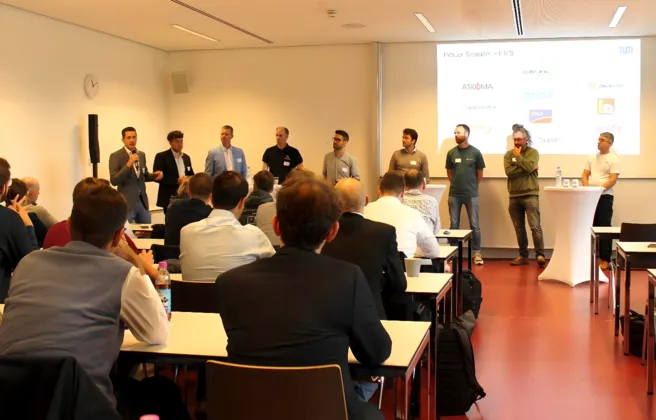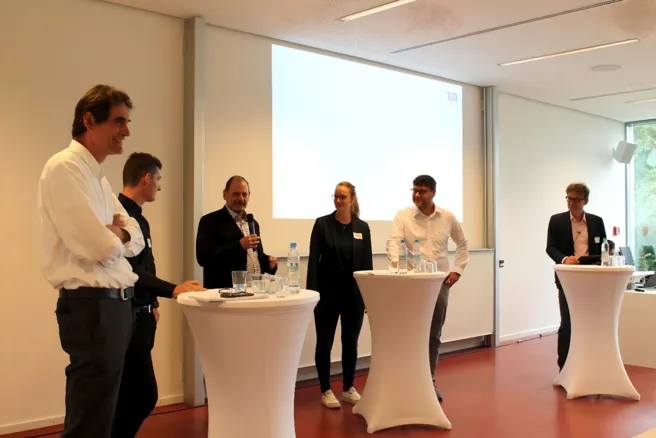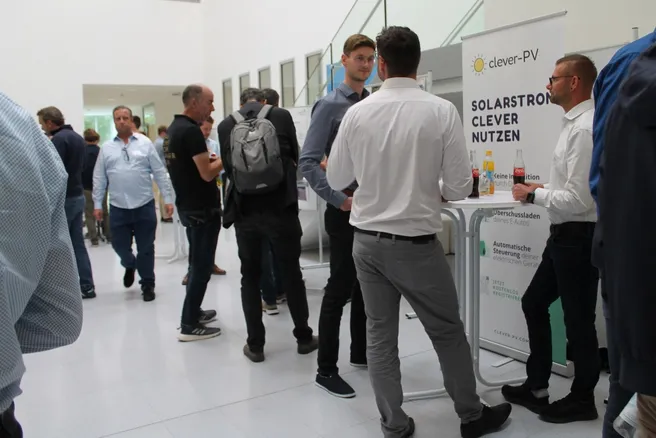According to current calculations by the Federal Network Agency, expanding the distribution network will cost around 200 billion euros. The key drivers of these costs are the grid integration at the low-voltage level of rooftop photovoltaic systems (consequently their supply to the grid) as well as the ramp-up of heat pumps and electric vehicles (consequently their grid connection). The ideal would be to make better use of the electricity grid by intelligently using household flexibilities with home energy management systems (HEMS) and thereby reducing expansion costs. The current §14a EnWG is primarily an emergency brake and not a mechanism for optimal network utilization.
The approach, which has already been discussed many times, was developed in the research project „STROM – Sektorkopplung und Microgrids“ of the Chair of Renewable and Sustainable Energy Systems and the CoSES laboratory (Combined Smart Energy Systems) at the Technical University of Munich under the direction of Prof. Dr. Thomas Hamacher simulated and examined in detail with real network data. On the one hand, it became apparent that heat planning and network planning must be thought of jointly and individually: Where do heat networks come from and no decentralized heat pumps or where do there be no heat networks and therefore decentralized heat pumps? And on the other hand, a key result is that a “grid-friendly use of HEMS” could significantly reduce the expansion costs of the distribution networks (publication: Optimization-based framework for low-voltage grid reinforcement assessment under various levels of flexibility and coordination). This results in two significant situations for network planning: the grid feed-in from rooftop photovoltaic systems in summer and the grid consumption of heat pumps in a very cold winter week. There is little influence on the situation of maximum grid consumption in winter, as there is little potential for making the systems more flexible. However, the grid feed-in can be influenced relatively easily in summer.
Now this hypothesis should be tested in reality. The first HEMS symposium took place on September 12, 2024 together with Ansbach University of Applied Sciences. The focus of the event was on the questions: Where are we at HEMS today? Which interfaces and communication will manufacturers rely on in the future? How is Section 14a EnWG implemented? And what can a network-friendly use of HEMS look like? The basic idea of the event was: “the HEMS industry meets at a large table for discussion”. A good 100 experts were represented: 15 manufacturers of HEMS, manufacturers of SteuVE and control boxes, distribution network operators, the Federal Network Agency, the FNN as well as researchers from various areas of energy technology.
In the second panel discussion, Dr. Niklas Vespermann (Federal Network Agency) the cost question: According to calculations, the network expansion could cost over 200 billion euros - a huge sum. However, HEMS offer the potential to significantly reduce the costs of expanding the power grid through clever load control. Prof. Dr. Thomas Hamacher emphasized that simple and practical measures to avoid load peaks could be the key. The practical perspectives were introduced by Sonja Baumgartner (LEW Verteilnetz GmbH), Christian Erber (ÜZW) and Frank Borchardt (VDE). “You have to consider the feed-in case and the reference case separately,” says Christian Erber. According to the distribution network operators, the use of Section 14a EnWG is currently not planned and will only be used in extreme emergencies. An important step is the digitization of the local network stations. “There is still a lot to do at the moment, the challenges are having enough skilled workers and the costs,” says Sonja Baumgartner. In the further course, the current §14a EnWG and its possible further development in the sense of a “preventive §14a EnWG” were discussed, so that a dimming command can only occur in extreme emergencies. A challenge here is that each local network station and the signals to the HEMS actually have to be considered individually. How a network-friendly HEMS can be used and what the implementation of the signals between the distribution network operator and HEMS should look like will be tested in the follow-up project “PhyFlex” in real implementation in the ÜZW distribution network.
This was followed by an exciting contribution from Dr. Vadim Gorski (Creatica GmbH), who demonstrated the possibilities of flexible electricity tariffs for HEMS. Alexander Stöger (FENECON) presented how home storage systems can use these tariffs intelligently. The conclusion was the lecture by Dr. Wolfgang Gründinger (Enpal). He was live from Berlin and presented the role of HEMS from the perspective of the market leader in the German rooftop PV market. His vision: the integration of HEMS into virtual power plants (VPP), the next step towards more networked, intelligent Energy systems to go. It is planned that the 2nd edition of the HEMS symposium will take place again at the TU Munich in September 2025. The organization is again taken over by Thomas Haupt, Dr.-Ing. Johannes Jungwirth and Prof. Dr. Thomas Hamacher.


